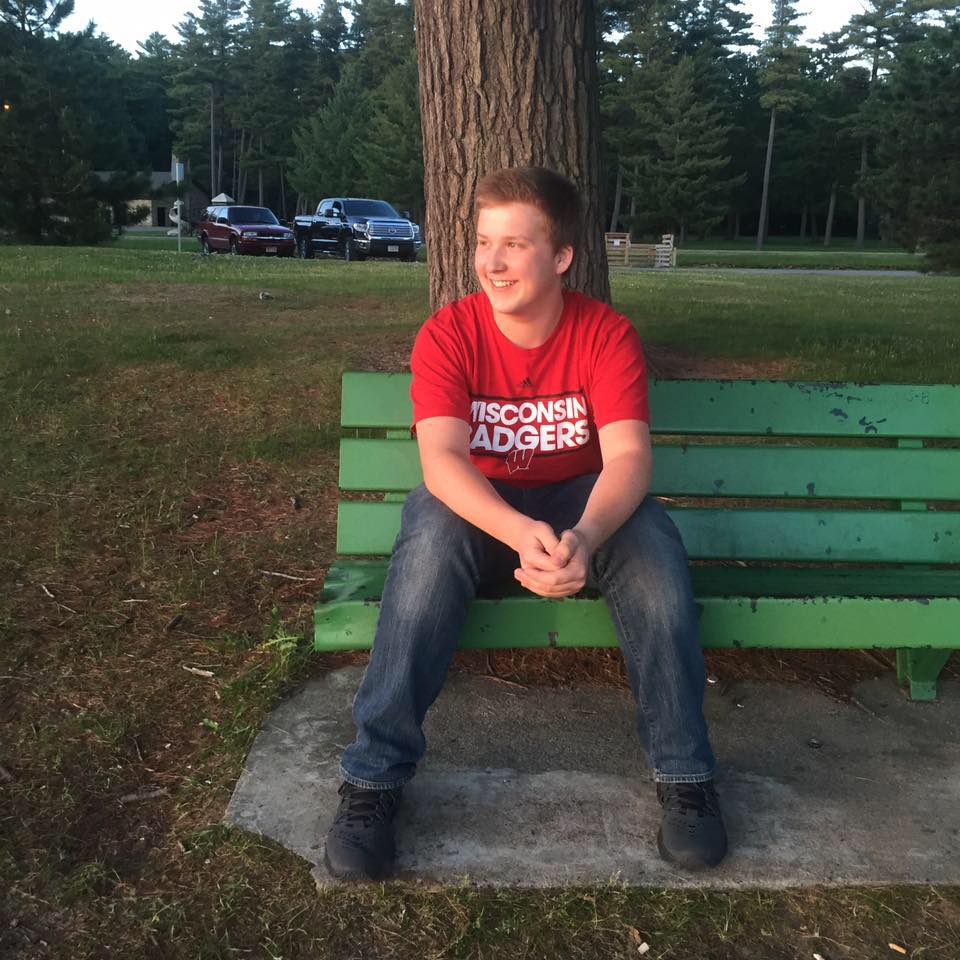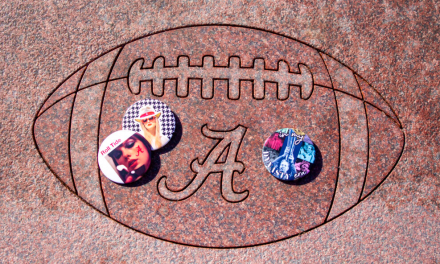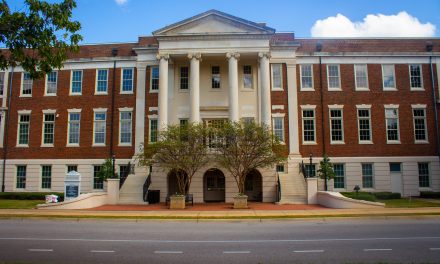
Nick Jones
Pre-Departure Journal - Film Reviews
The first of the three movies that I have watched in preparation for this trip was Hunt for the Wilder people. This movie follows a foster boy and his adoptive father as they escape the pursuits of the New Zealand Police throughout the wilderness. Ricky Baker, the boy, and Hector, the father, have two contrasting personalities that both work together and compete against each other to escape the police. At the beginning of the film the two have extreme differences, but slowly throughout the storyline, I saw a strong father-son relationship grow between the two. This film was very well put together and used a combination of action, character building, and compassion to keep me on the edge of my seat at all times. I think that this is an extremely beneficial movie to watch prior to departure on a trip to New Zealand. I believe this because, through this movie, I saw a lot of what New Zealand offers in terms of the wilderness. This movie was especially appealing to me because I plan to spend a good amount of time outdoors in New Zealand, fishing the world-class trout streams and hiking through the beautiful national parks.
The second film that I watched to prepare for this trip was Pork Pie. New Zealander Matt Murphy wrote Pork Pie as a remake for the 1981 film Goodbye Pork Pie. As I watched this film, I noticed a lot of similarities between it and Hunt for the Wilder people. Just like in Hunt for the Wilder people, this storyline follows around a run from the New Zealand Police. In this film, you follow a group of three friends, brought together through unconventional circumstances, as they run from the police in a bright yellow Mini Cooper. Just like in Hunt for the Wilder people, I was on the edge of my seat thanks to the numerous action scenes, close calls, and thrills that occur as this trio flees across the span of New Zealand. I think that this movie gave me more of an insight into how the city looks in New Zealand, rather than just the wilderness. As I watched the scenes that took place in the cities, I saw many similarities between the United States and New Zealand. Other than driving on the left side of the road, a lot of the infrastructure seemed to reflect what we have in the United States. Watching this film was beneficial to me because it gave me the reassurance that I will not experience total culture shock when I arrive in New Zealand since I will be able to do many basic things the same way I would in the States.
The third and final movie that I watched was The Dark Horse. This general plot for this film revolves around a real person, Genesis Potini. Genesis was a genius when it came to the game of chess, but encounters some trouble because of his severe bipolar disease. At the beginning of the movie, Genesis goes into an old store and begins playing chess with himself. The shopkeeper does not take fondly to this action and calls the police. The police take Genesis away because of his “mental state,” and deliver him at a mental hospital. The hospital released Genesis when his brother came to get him, but this would just be the beginning of his struggles. The remainder of the movie follows Genesis as he competes in chess while battling with his bipolar disorder. I think that this film is very good, and has a certain depth that really allows you to connect with Genesis. Throughout the movie, I could really relate to the struggles that Genesis was facing in the chess world, as well as with his personal mental health. Although I do not think that this movie had a lot of benefit for me on this trip, I enjoyed learning about and experiencing the life of New Zealander Genesis Potini.
Integration of Maori Culture in Modern New Zealand Life
Every since the Maori arrived in New Zealand, they have had a significant impact on the country. The Maori people created a culture that was rich with symbolism and tradition, and the culture still has a very strong influence on modern life New Zealand. From the moment I stepped off the plane in Auckland, I could see this Maori influence. Statues, art, and jewelry that contained Maori symbols were on display, giving me a taste of what New Zealand is all about. Being greeted with the traditional “Kia Ora” piqued my interest on how deep the Maori influence runs, and how they continue to keep that culture alive in a country that is becoming increasingly diverse.
One of the biggest ways that the Maori keep their traditions alive is through the recreation of the Pōwhiri. The Pōwhiri is a traditional welcoming ceremony by which the Maori would determine if the visitor were friend or foe. In this ceremony, the chief of the Maori tribe approaches the chief of the visiting tribe, displaying his weapons and performing attack maneuvers. Once the visitor has been determined friendly, the Maori women sing a song of welcome as they guide you into their Marae. I had the honor of being able to be the chief in the Pōwhiri that we participated in, which was a very eye-opening experience. I was briefed on the exact way to act during the ceremony so that we could see the best representation of what the ceremony would have looked like hundreds of years ago. This passion for teaching is what exposed me to the beauty of Maori culture, and it is what will keep the culture thriving for years to come.
Another way that Kiwis push to keep the Maori culture alive is through the teaching of the culture in their schools. A visit to the Mahurangi College in Warkworth allowed me to see how this integration is done. The students that I talked to told me how they grow up learning Maori language, much like we do with Spanish in the United States. But unlike the United States, the influence of Maori culture goes deeper than just one language class. The pillars of Mahurangi College reflect traditional Maori values, meaning that every part of their school is run with these values in mind. Everything from their curriculum to the Hakka for visiting students has a Maori influence that instills the culture into young minds. This practice is not exclusive to Mahurangi either. The students said that many schools across New Zealand are operated with those same values in mind. Teaching kids about Maori culture from a young age and signifying it’s importance in New Zealand history has been a successful method of keeping the culture alive thus far, and I believe that it will continue to be in the future.
The biggest problem that Maori culture will face in the future is the increasing diversity in New Zealand. I had the opportunity to talk with a man who is half-Maori and has observed the changes in the ways people have celebrated Maori culture over the years. He believed that the influx of foreigners has caused a decrease in the influence of the Maori culture. In places such as Auckland, which are central hubs for foreigners to immigrate to, there are so many conflicting cultures that Maori does not stand out as much. Alongside this, he said that foreigners have a general lack of respect for the Maori culture, and instead of learning more about the Maori upon immigrating to New Zealand, solely bring their own cultural influences into the country. The lack of respect for Maori culture can also be seen in tattoos. This man explained to me that the Maori have an extensive history of tattoos, each with a very sentimental meaning. However, a lot of people have been getting these Maori symbols purely for aesthetic reasons, which completely ignores the tradition behind the tattoo. The Maori people will face many cultural challenges like these in the future, and will have to find ways around these issues if they want to continue to have such a strong influence in the lives of New Zealand citizens.
Effects of the Christchurch Earthquake on the Nearby Community
Natural disasters can have a massive impact on a community, and this impact can easily be seen in Christchurch. The 2011 earthquake did damage that still hurts the city today, and will continue to for a while. Driving into the city is like entering into a ghost of what used to be a flourishing community. Some new buildings have risen from the rubble, but many sites are still scattered with debris as though their buildings fell yesterday. Both businesses and apartments were leveled by this earthquake, leaving many without work, money, and homes. The citizens of Christchurch have rallied around the disaster to help one another, but the negative effects of the earthquake still have a strong hold on the city.
The displacement caused by the earthquake was one of the biggest negative effects. Whole communities had their homes destroyed, and not a lot had places to go after. I talked to a man in Lyttleton, a town a few kilometers away from Christchurch, who witnessed this displacement firsthand. After the quake, he said that citizens flocked to cities near Christchurch looking for shelter. His hometown faced a lot of stress with taking in refugees, mostly because of the lack of resources available. This lack of resources meant that they could not support every person, leaving many temporarily homeless. Support groups quickly rallied to combat displacement, which helped many who had their communities destroyed, but some citizens still remain homeless to this day.
Naturally, humans will come together for a common good when faced with disaster, but the way that members of the Christchurch community have supported each other is something special. The Student Volunteer Army from the University of Canterbury is an excellent example of this. They successfully rallied thousands from the community to partake in the cleanup of neighborhoods and the city. I spoke to one of the supervisors of this school function about how he saw the community act in light of this earthquake, and he said that it was unlike anything he had every seen. The community came together, despite all differences, to rally around a common cause. He said that it created a sense of unity among citizens that he had never seen before, and probably would never see again.
Even though it has made a great deal of progress since the earthquake, Christchurch still has a long way to go. The city is now facing problems with infrastructure and lack of income in the area. A small business owner I talked to said that she has seen a lack of big corporation interest in the city since the earthquake, which has not helped the community at all. She said that personally her small business has been able to succeed, as there are no large competitors for her small coffee shop, but only having small businesses has not been good for the overall wealth of the city. With few large corporations investing into Christchurch, there has been a shortage of funds available for cleanup and rebuilding projects, which is part of the reason why the city has not sprung back to its full potential yet. It will be interesting to see the ways that Christchurch funds its rebuilding projects in the future, but if they continue on a path of little investment from large corporations in the future, the rebuilding process will be very slow.
Looking past face value
As I reflect on the past month I have spent here in New Zealand, I always come back to one idea: never take a country at face value. Coming into this trip, I knew very little about New Zealand. My view of the country pretty much consisted of me knowing that there would be beautiful views and that the Maori had an influence, but I now know that there is so much beyond that. Just like any other country, New Zealand has seen its share of social problems and cultural problems. Spending the past month here has allowed me to dig deeper into both of these topics and how they directly affected the communities that have experienced them.
At face value, I would have thought that all was well and happy for the Maori residents of New Zealand. Even after the first week in New Zealand, I still had this connotation, mainly because my only exposure to their culture at that time was displayed artwork and the recreation of cultural traditions. As I began digging deeper into their population on the island, I found that the Maori have many struggles that minority cultures are facing all over the world. I found that much like the African American community in the States, there seems to be underlying racist views towards these people. Selwyn, a man we met at the ice cream shop in Christchurch, was perhaps the biggest advocate we have met for this point. He exposed us to the reality of being a Pacific Islander in New Zealand. From Selwyn, I learned that even at an elementary level schools feel the effects of racism. He said that generally the Maori and Pacific Islanders attend schools separate from European ethnicities solely because of social constructs. We have seen patterns like this across the United States all throughout history, so it was very easy to make that connection between our cultures.
Another thing that I realized is the Kiwis pride themselves on having a female prime minister. Based upon this, I would have thought that life in New Zealand was extremely good for women, but again this was just the face value. Wyatt and I became good friends with a man named Simba who really exposed me to what home life is like for women. From what he told me, domestic abuse is a huge issue in New Zealand that many turn a blind eye to. He said that many of his friends grew up seeing their fathers openly abuse and beat their mothers with no consequences. The fact that this is not an urgent issue in the country is very saddening, but it is a perfect example of how every country has social issues that need to be dealt with.
In conclusion, from my time on this trip, I feel like I have been taught to look at foreign societies in a new way. As I continue to travel around the world in the future, I will take the talking points that I have learned to use in this class to gain insight into what life is really like in their communities. Being able to connect with the citizens allows me to look past the stereotypes that are put on countries, and see what life is like beyond the face value.




